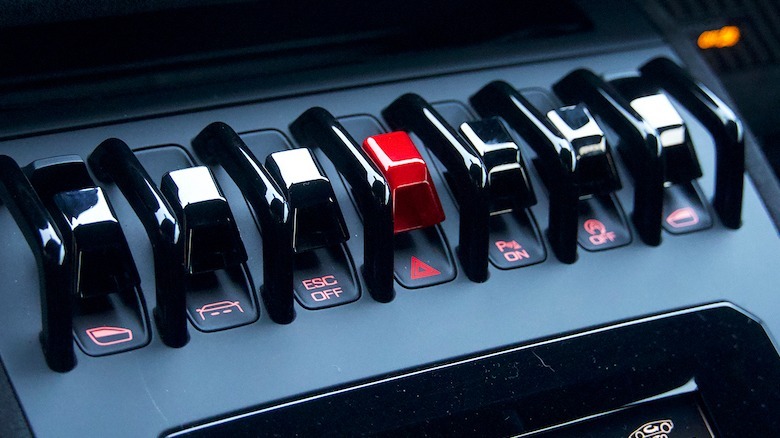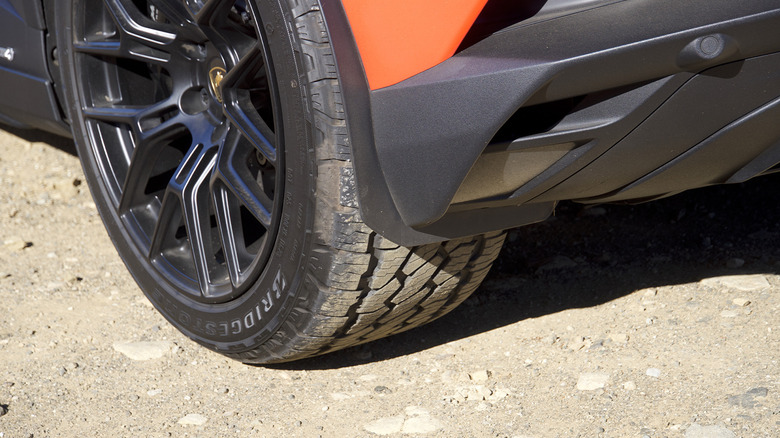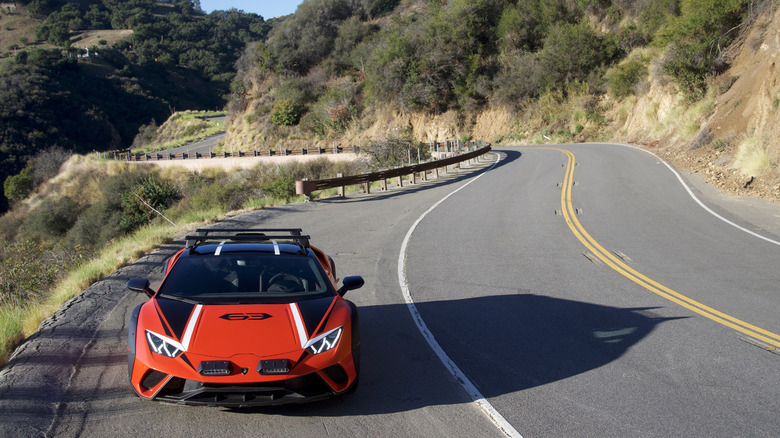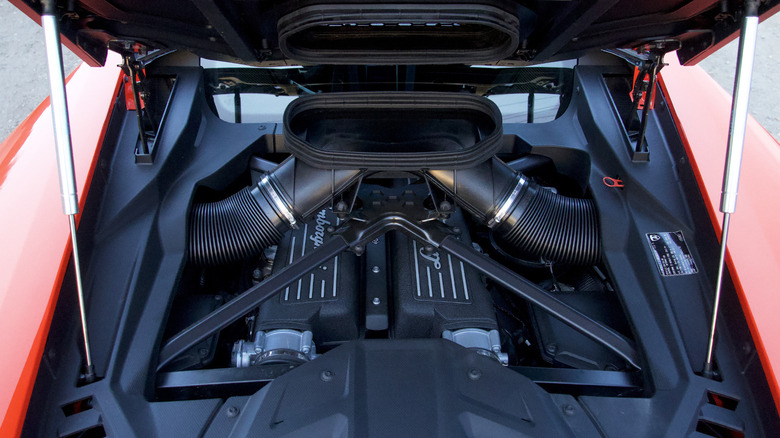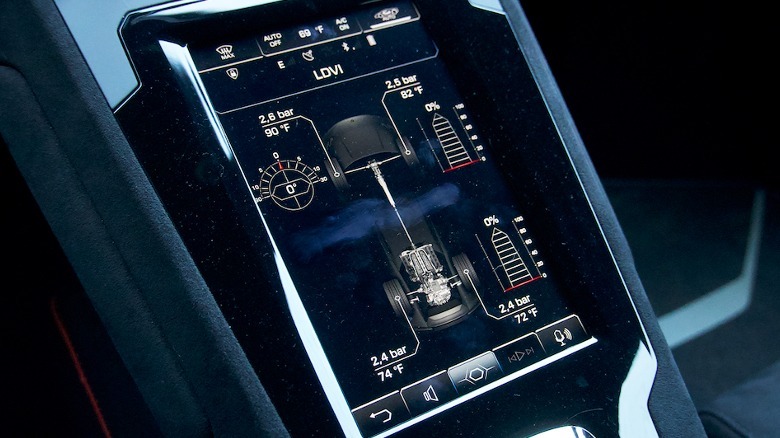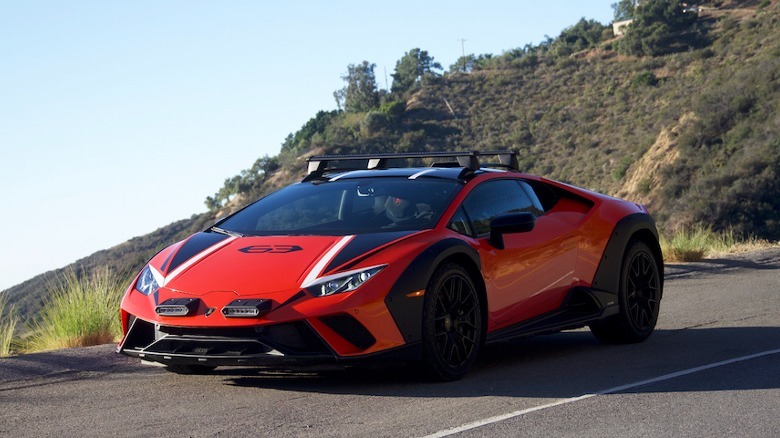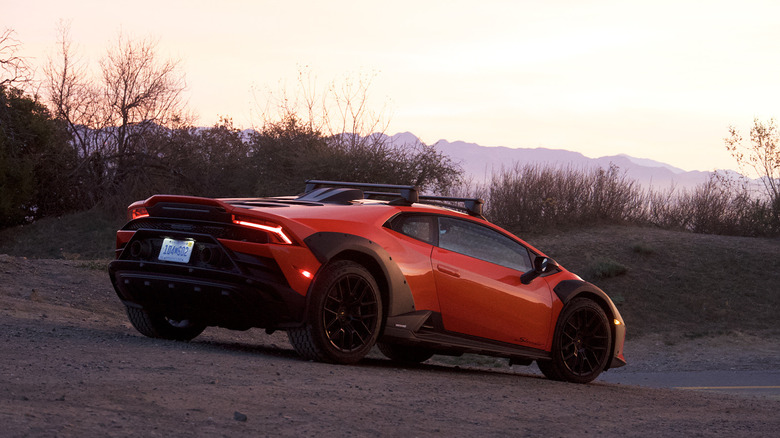2023 Lamborghini Huracan Sterrato Review: Maybe The Greatest Car Ever Made
- Safari-style six-figure supercar, what else do you want!
- Spectacular handling beyond the limit of sanity
- Everything brilliant about Lambo, in an absurdly fun package
- No rear visibility
- Priced out of its own intentions
- I can't keep it
Not a single day over the last seven months passed by without memories of the Lamborghini Huracan Sterrato media launch flitting through my ragged automotive journalist's brain. Sliding top speed sideways in the dirt infield of Chuckwalla Valley Raceway, stage rallying an all-wheel-drive six-figure supercar, Italian test driver in the passenger seat yelling "Full throttle, full throttle" all the while—Lambo launched the Sterrato in truly unbelievable style and left me indelibly scarred by the stuff of dreams, no exaggeration necessary.
But even as early as that sunny day in May, Lamborghini's reps told me that the idea of what an unsupervised journalist might do with a Sterrato loaner sounded, to them, much closer to a nightmare. And for good reason, knowing our kind, even if I spent the next six month bummed out that no Sterratos would end up in the loaner fleet here in Los Angeles. Then, seemingly out of nowhere, everything changed.
But Lambo knows the risks well, so the prospect of flat tires, journalists stranded out in the desert with no cell phone reception, and broken parts flying off supercars all explains why, before handing me the keys for four days, the legal team made me sign a contract promising in unequivocal terms not to take this Huracan off-roading. My own memories would have to suffice for now, but the whole point of dropping me off a Sterrato to tool around West LA was really more so that I could experience how the world's first off-road supercar handles real-world daily driving on public roads.
Easy living with a Lambo
Immediately and all of a sudden, actually living with a Lambo gets a whole lot easier. I pulled in and out of my garage without needing front axle lift. Speed bumps flew by at 30 miles an hour without fears of damaged carbon-fiber front splitters. Even steep driveways barely challenged the 10.4 and 26.5-degree approach and departure angles. Yes, how funny is that bit of four-wheeling terminology in a story about a mid-engined, V10-powered supercar?
All jokes aside, though, Lamborghini undeniably went whole hog on the Sterrato, which emerged as the brainchild of dedicated rally racing fan Rouven Mohr—also known as Chief Technical Officer around the hallways of Sant'Agata Bolognese. Developing this Huracan variant required far more than simply bolting on a body lift kit, though. Instead, the Sterrato also received—truly required—revised suspension mounting points to allow for increased articulation, longer travel for new shock dampers, and enough wheel arch clearance for 19-inch wheels shod in a set of very special Bridgestone tires.
Overall, the Sterrato rides 44 millimeters higher but only weighs 3,241 pounds, or about 200 pounds more than a rear-wheel-drive Tecnica trim that formerly occupied the official slot of the Most Daily Driveable Huracan. Of course, as a dedicated off-roader, the Sterrato retains the Audi/Lambo siblings' quintessential all-wheel-drive system. And yet still, that 5.2-liter V10 puts out 610 horsepower (SAE) and allows for a top speed of 168 miles per hour.
It's time to talk about tires
That top speed actually brings up a huge detail so often overlooked but, in this case, absolutely crucial: tires. Bridgestone developed the Sterrato's tires specifically for this application, using the Potenza sport and race's inner construction of aramid and nylon, but with an all-terrain tread pattern on the exterior for better grip in the grit and grime. Sizing actually steps down from other Huracan variants, not just to 19-inch wheels that allow for a taller sidewall but also in width: the rears now measure 285 millimeters wide (as compared to a Tecnica's 305mm) while the fronts are 235s (versus 245 for the Tecnica).
That unique aramid and nylon construction also allows Bridgestone to claim the Sterrato's tires can run flat at zero PSI for 50 miles at 50 miles per hour—an excellent source of confidence given the lack of a full-sized spare in the chance of any real off-roading. And Bridgestone brought an entire truckload to Chuckwalla Raceway for the original media debut, but I never saw nor heard of a single flat tire despite five fulls days of excessive shenanigans. In terms of wear, over four days of grocery runs, commuting, and an unavoidable excess of canyon carving throughout my loan, these tires held up much better than I expected, too.
On tarmac, the grippy rubber compound is still almost capable of handling the Sterrato's serious horsepower, while the taller sidewalls also contribute to a more compliant ride as well. While pushing hard on a winding road, that all-terrain tread does create an excessively squiggly, squirming sensation at all four corners. But don't take that the wrong way—while such a statement might insult the average Ferrari or McLaren's handling prowess, the Sterrato instead promotes this new style of supercar performance. The sketchy level of grip, especially when the tires haven't reached full temp, actually makes ripping around on asphalt more akin to rally racing.
Generous nannies make for happy children
Of course, Mohr's overly generous traction control and ESC programming highlights the behavior. Enter a corner too hot and the Sterrato barely cuts into fueling, instead letting the massive carbon-ceramic brakes chatter with a bit of early ABS before the front wheels hook up and the rears skitter out a bit. Instead of lifting to reduce speed or even holding steady on the go pedal, trust the all-wheel-drive by throwing in more throttle, then either whip the wheels over into countersteer or, even better, set the front tires straight and haul through a controlled slide until the rear end calms down and scoots back into line. And feel free to watch the tire temps rising on the main gauge cluster, which changes layouts for each drive mode, or even pull up the hilarious inclinometer function on the center console screen.
Back to the task at hand, though, because the tires always lack a certain level of glue-on traction, the slide never stops in a raucous jerk that then prompts a spin. The shimmying eventually, simply, naturally just peters off—just how the perfect slides of WRC professionals result in the perfect angle of attack for the next straight or series of pirouettes.
No joke, the whole dance approaches levels of fun that only full-throttle off-road driving ever brought out for me previously. That means lap times on a tarmac track will suffer, of course, but the incessant and borderline painful smile on my face more than made up for lost ticks on a clock. And the Huracan's inherently optimized geometry makes the entire car, from tires to seat and steering wheel, so incredibly communicative that even on and past the edge of traction, the yaw never seems beyond correcting—every driver willing to risk all will end up returning to reality feeling absolutely heroic. (Just don't ask about that time I turned ESC fully off at Chuckwalla via the fighter jet switch at the top of the center console.)
Only two pedals, and all the better for it
Normally, I prefer sports cars with clutch pedals and stick shifts. But in the Sterrato, that V10 pairs perfectly with the snappy seven-speed DCT, which also integrates perfectly into the digitalized driving experience without, critically, the impression of overly stern electronic nannies cutting into any fun factor.
In the calmest "Strada" mode, the Sterrato's intake and engine noise almost entirely covers up all but the lowest tones of exhaust rumble. The suspension softens up to the max, throttle response approaching the level of a Honda Civic, and the DCT shifts more slowly to prevent any potential lurching during stop-and-go traffic. Click down into "Sport" mode, though, and the civilized manner entirely evaporates. Firmer dampers, tighter steering, and a surging throttle all beg for more input, as the exhaust roars to life above about 4,000 RPM and then pop-bang-snorts through overrun.
But my favorite mode, which I ended up using even around town, was obviously the new "Rally" setting that replaces "Corsa" on other Lamborghinis (yes, the Urus Performante gets an impressive Rally mode, too, but we're talking supercars here). In Rally mode, the steering lightens up a bit, the suspension allows for more float in the mid-travel range before firming up, and the engine retains all the stupendous shove but with slightly slower DCT shifts programmed to keep from upsetting weight transfer or prompting a loss of traction in slippery situations.
Surprising fun even on asphalt
The resulting combination of body roll, grip up to a limit followed by predictable and confident drifting, and incredible power delivery simply belies comprehension. The worst angels of my nature took charge at every opportunity, I can admit, but I never approached anything near a spin on public roads. Instead, each punch of the V10 squats the rear haunches and the Sterrato leaps forward in a surge of drama, unleashed with a bellow until every stab at the brake pedal nosedives into a corner, and then rolling into a turn just lets the tires and suspension float over road surfaces in a manner that no other modern car I've ever driven can manage.
To an extent, I found myself comparing the experience to riding motorcycles, as my vision extended past little bumps and ruts in the road to focus on the longer bends and undulations. Forget those pebbles, feel that wave rise up and lift the nose a bit until the tail crests and then hammer the gas again. Let go and lean into every aspect of asphalt while the tires and shocks gobble up the little things that might worry more typical supercar drivers. We're happily in the flow now.
Just about the nearest thing to perfection
Before this review devolves into fanboy gushing about how every supercar deserves a Sterrato variant, let me make very clear that no car is perfect. And least of all, in the case of my own wants and needs, the Sterrato with its $273,177 starting sticker—not to mention my loaner car's $111,000-plus of options, which includes the livery, door lights, Arancio Xanto orange paint, and plenty of extra carbon-fiber bits and bobs.
A few little details also grind my gears, made all the more frustrating because the rest of the Sterrato comes so very close to my own personal vision of automotive perfection. The functional roof intake, as opposed to the Huracan STO's fake pieces, entirely blocks rear visibility. This renders the main rearview mirror entirely useless and repeatedly reminds you of the unbelievable fact that Lamborghini decided against a digital rearview mirror. On a car this steep, a digital mirror (and also wireless CarPlay) seems less than unreasonable to expect.
For photos, I also never figured out how to turn on the front light pods despite toggling no fewer than six different light switches and buttons repeatedly. (Here, dubious road legality may have prompted Lambo not to wire the lights at all.) The incredibly potent carbon-ceramic brakes also left me fairly concerned about a pebble getting in and scoring a rotor that might cost well into five figures to replace. Steel brakes, in this case, seem far wiser for those fractional few owners who plan to do any real off-road driving.
No car is entirely perfect
A manual parking brake could build on the driftability, both in dirt and on asphalt, while a fully locking center differential in Rally mode might further accentuate the centrally rotating yaw that characterizes the Sterrato slip-and-slide experience. And then the roof rack's paltry 88-pound rating prevented me from tying my mother's Christmas tree on top—and that's not to mention the prospect of pine needles falling into the exposed louvers of the engine bay and igniting a wintergreen fire.
At the very least, the roof rails and crossbars can easily hold a spare wheel, a couple of bicycles, or a surfboard, if not any rooftop tent currently on the market. But adding a few more pounds of capacity would have probably required a drastic makeover to the monocoque, rather than the subtle suspension mounting revisions that made the Sterrato feasible in the first place, even at a significantly inflated price point versus other Huracan variants.
Otherwise, I handed back the keys with zero remaining doubts about the daily driveability of a Sterrato. I only even scraped the front undertray a couple of times on the steepest driveway, all as part of my scientific experimentation—and in the meantime, developed equal parts awe of how much fun a lifted supercar delivers, as well as how perfectly Lamborghini actually pulled the whole package together.
No less exotic, either
One friend asked whether lifting a supercar to allow for easier daily driving in turn makes a sacrifice in the exoticism factor that supercar buyers might actually want more. A legitimate question, but absolutely not, would be my solid response now. In a Sterrato, every drive turns into an adventure, even a trip around the block to the corner store.
And the general public clearly agrees, at least judging by the number of my neighbors—all at this point accustomed to the nonstop stable of ridiculous cars I bring home—who stopped to ask questions, the number of kids who wanted to take pictures or hear the engine rev, even the number of senior citizens I caught grinning with childlike abandon. A meter maid even asked to shoot a quick video for her nephew and maybe sit in the passenger seat!
Blame the orange paint or the hilarious fender flares, but the Sterrato creates a fun impression everywhere I went. Mine would come in a matte grey or green, yet even in the brightest colors, none of the potential obnoxiousness that other supercars often inhabit simply by nature remains in something so patently implausible.
Turns out there is such a thing as too much traction
As I blapped through the rev range right up to 8,500 RPM with the paddle shifters, drifted around bends, and generally grinned til my face muscles hurt, I still needed to remember that all four days of driving never even included the real deal off-roading that I also am lucky enough to be able to confirm that the Sterrato is capable of handling, as well.
Carroll Shelby is often attributed as having coined the phrase "There is never enough horsepower... Just not enough traction." Well, Enzo Ferrari might roll over in his grave today because the mad scientists at Lamborghini proved Shelby wrong with the Sterrato. Turns out, having way more power than tire grip can, with the right touch, produce a magical balancing act where geometrical predictability meets body roll, steering feedback, and weight transfer.
2023 Lamborghini Huracan Sterrato Verdict
The Sterrato serves as an antithesis for the sharpness that so many OEMs, including Lamborghini with other trims and models, often strive so hard to achieve. This car is a reminder that lap times and outright speed aren't everything in the real world—though rest assured, anyone can still find stunning speed in a Sterrato with ease. But that would be missing the point entirely, in my head-over-heels opinion.
Instead, while scrabbling for grip regardless of surface condition or dancing through a communicative interplay of curves and bends cradled within a wondrously sweet chassis, even just tooling down the road as the V10 burbles and bangs, the Sterrato whispered sweet nothings in my ear from that first media drive to this very moment.
And the inkling grows and grows that this might just be simply the greatest car ever made, on road or off—absolute, undeniable absurdity in automotive form and yet absolutely, perfectly reasonable to daily drive. Reasonable in my wildest dreams, at least.


